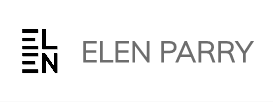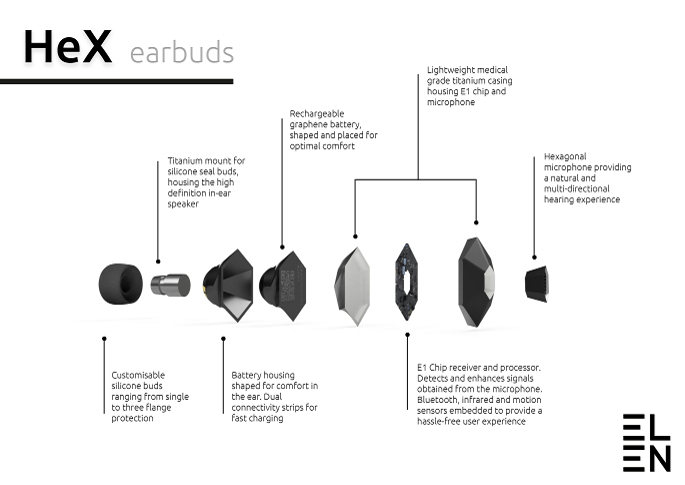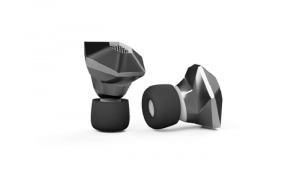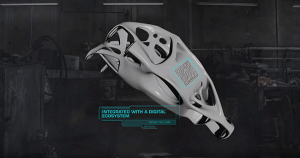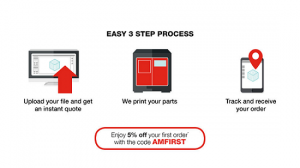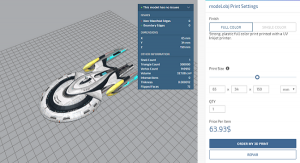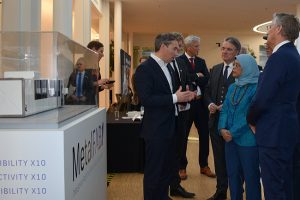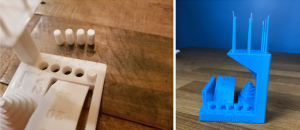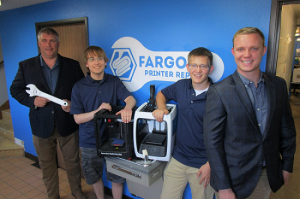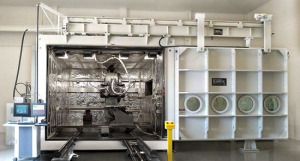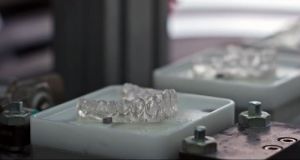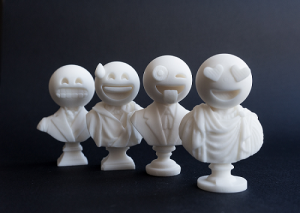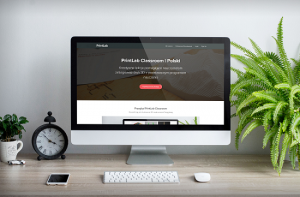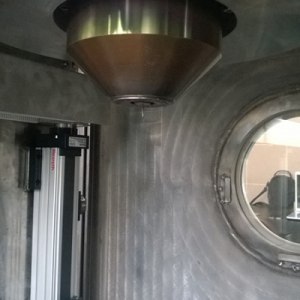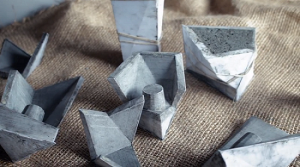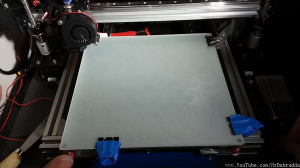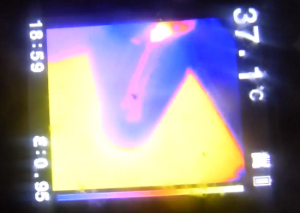We’re very interested in seeing if hubs can bring about the future of 3D printing in a communal way. We’re far from alone in that front however cities such as Singapore and Dubai are pouring lots of money in trying to be the silicon valley of 3D printing. Without a clear candidate, many other cities are toying with that idea. What if the Silicon Valley of 3D printing could also contain some beach, design, industry, a glass of nice Penedes wine, tapas and strolls through the La Boqueria market? What if in some years we’d find out that our center was Barcelona? I can’t be alone in thinking that this would not be a bad outcome at all. One person that wants to bring this about is Aintzane Arbide. She is the Business Development Manager at innovation management institute Leitat and manages the IAM 3D Hub a European funded technology incubator focused on Additive Manufacturing/3D printing.

What is IAM 3D Hub?
The International Advanced Manufacturing 3D Hub, the IAM 3D Hub, is a Digital Innovation Hub & Competence Center specialized in Additive Manufacturing and 3D Printing who will provide SME’s with a “One-Stop” Shop to assess, guide and address all their needs in Additive Manufacturing.
The IAM 3D HUB is the only Digital Innovation Hub specialized in 3D printing recognized by the European Commission and It has been chosen to take part of the Strategy Board selected by the Ministry of Industry in Spain for the definition of the DIH’s roadmap.
What are your goals?
The IAM 3D Hub wants to accelerate the adoption of additive manufacturing and 3D printing technologies in the European Union manufacturing sectors as an alternative way to design, develop and manufacture new competitive products and services that strengthens their competitiveness.
What advice would you give me if I were a company new to 3D printing?
If you are thinking of adopting a 3D printing technology, we would recommend you to carefully analyze and identify which AM solution is the best option to solve your needs as a first step. Then, you need to reply to the following questions: What are your manufacturing capacities? Is your team ready to adapt designs and production processes to additive manufacturing? At IAM 3D HUB we understand that these questions are basics if you want to adopt 3D printing and we have a specialized team to help companies to resolve them by providing a wide range of services.
What advice would you give me if I wanted to manufacture with 3D printing?
I will not give you an advice, just a recommendation: to invest in 3D/AM training and learning programs. The process of adoption is just starting, so now companies have the opportunity of acquiring the knowledge and to be the first one in their field to include 3D printing into their manufacturing process and take advantage of its benefits.
What companies are you looking to partner with?
On the one hand, our founders and current members of the IAM 3D HUB are HP, Renishaw, Leitat, Coniex, and Wacker as technological players. On the other hand, our Training, Business, and Economical Players are Fira de Barcelona and the main Spanish trade show specialized in additive manufacturing: In(3D)ustry. Besides, we have signed different agreements with potential partners that will strengthen the relevance of AM in Europe. So, we are open to cooperate with many different companies and institutions along the whole value chain of additive manufacturing.
Why the focus on manufacturing?
We are not focused only on manufacturing. We understand that 3D printing is a disruptive technology that is being expanded. So, we just want to help companies to overcome their fears and adopt additive manufacturing in a way that meets their needs: either in manufacturing or rapid prototyping, etc.
How do you get SME’s to manufacture with 3D printing?
Helping them to gain confidence by offering the proper AM solution, a cost estimation, a design & re-design service to adapt their parts or by offering them customized AM/3DP trainings.

Is training what is holding SME’s back?
Training is an important factor, of course, but is not an obstacle. As we see it, designers and engineers of all kind of companies have the opportunity to improve their knowledge and specialize their careers in additive manufacturing. We also offer a customized training program for companies and SME’ focused on closing their digital skills’ gap.

What is your living lab?
We have a functional working 3D printing production line with 9 Multi Jet Fusion printers (HP), 2 Selective Laser Melting (Renishaw), 3 Fused Deposition Modelling and 1 Stereolithography. Besides, the post-processing area includes 4 Sandblasters, 1 Vibrational Polishing and 2 Dyeing machines, 1 Graphite Blaster and 1 Curing Oven. We also have a technical area with software for design and 3D modeling, DfAM tool for topological and geometrical optimization, analysis and modeling simulation. Finally, as our facilities are located in Leitat premises, we have access to their labs for material characterization and mechanical properties validation, within many others.
What are the main barriers to 3D printing adoption?
Nowadays, we think the main barrier for companies that want to adopt additive manufacturing is the lack of knowledge on what the technology (and materials) can deliver. Therefore, we have focused on providing different trainings for specific purposes, which can also be fully customized.
Furthermore, technology’ costs, productivity or materials available could lead into confusion for companies if they don’t have any previous experience.
What products do you see 3D printing being used for?
We are assisting to a rapid development of the technology and discovering new products which are adapting to AM materials and technologies available to maximize their properties and usability. Nowadays, 3D printing is a disrupting technology in multiple sectors as aerospace, automotive, industrial equipment, medicine, electronics, consumer goods, construction, and food, among others
What areas are ripe for industrialization with 3D printing?
As commented earlier, sectors like aerospace, automotive, industrial equipment, medicine, electronics, consumer goods, construction and food are already taking advantage of AM capabilities. What AM is currently able to deliver is fully optimisation and customisation for small series of parts, industrial tooling, medical equipment etc.
What kind of events of yours should I attend?
Our doors are open if someone wants to visit us and discover our services and 3D printing factory. Furthermore, we are going to be present at the following trade shows this year: Addit 3D (Bilbao) and IN(3D)USTRY (Barcelona) in Spain, TCT in England, and K (Düsseldorf) and Formnext (Frankfurt) in Germany. Come and join us!
Why is Barcelona becoming a 3D Printing hub?
Catalonia, with Barcelona as its main capital, has a 3D ecosystem with a huge number of companies located in the metropolitan area since many years ago, including HP or Renishaw main sites, leaders in 3D printing.
According to that, the European Union selected this community on its funding program Ris3, Llavor 3D, leaded by Leitat Technological Center to invest in 3D printing research and development.
Besides that, the first and only High-Tech 3D printing incubator will open its doors in Barcelona next February. The project, lead by Consorci of Zona Franca de Barcelona and Leitat Foundation, will offer co-working spaces, marketing services and access to a 3Dprinting lab with the latest technology to 25 companies, SME’s or startups selected by a contest.
This project will be only the first seed of the creation of a 4.0 district and it will be completed with the inauguration of DFactory 4.0, next June, in Zona Franca Barcelona too, a building with more than 17.000sqm where different companies linked to 4.0 technologies will move out and share labs and networking spaces.


